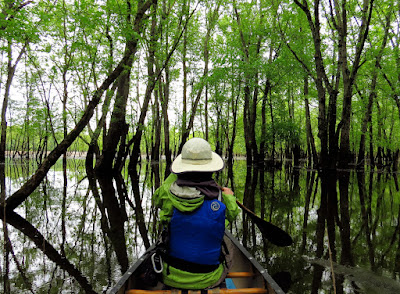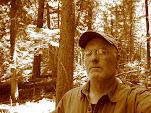Today, I moved upriver to the section above Lake Zoar, where I paddled yesterday. I put in at the four span truss bridge. It is calm, cloudy, and close to 70F, a pretty fine combination for canoeing.
This section of the river was reservoir-ed in the 1955 with the completion of the Shepaug Dam. It differs greatly from the downstream Lake Zoar and being a much better experience, I paddle here fairly often.
It is not particularly good for wildlife viewing. As a reservoir that was flooded up the steep sides of a valley, there is a lack of marshland or any extensive shallows that might support a variety of waterfowl. But, I can expect to spot an Eagle occasionally as well as Hawks, Vultures, Great Blue Herons, Mergansers and Wood Ducks.
What does make this section interesting is that it has large sections of forest and much less and much better planned development. A good amount of the valley sides are State Forest or private forest preserves. As to the housing, minimum lot sizes are quite large and most houses are set well back from the water's edge. In fact, there are several docks with boats where the owners house is not at all visible - just a trail from the dock leading off into the woods.
 |
| Entering the Lover's Leap gorge |
I head upstream, following one side until I get the urge to cross to the other... no real reason. There are few boats, mostly bass boats. They are the best of motorboats as they speed by, disappear quickly, and spend a good amount of time parked near shore while the owner fishes.
I pass through the Lovers Leap gorge and continue a short way until I remember why I usually turn at the gorge. There is a busy road right nest to the river and the upstream side of the gorge, quite the contrast with the peacefulness that is found downstream.
 |
| Historic 1895 iron bridge that spans the gorge |
The wind comes up on the return, but it is not steady and comes from pretty much any possible direction at different times. I guess it, looking at the clouds, to be tiny weather systems that don't have enough energy or moisture to become rainstorms.

















































